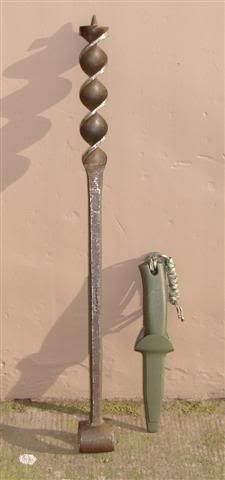I thought I'd ask now before I blunt them but what is the best practice regarding sharpening augers?
I've been lucky enough to pick up two unused but old Sheffield made scotch eye augers a 8 " long 1" dia one for £2.75 off of that excellent chap on eBay and a 24" by 1 1/2" job off of my favourite surplus stall on Burnley flea for £4.
Incidentally Footprint still make the large sort should anyone be planning some fence making et al but the prices are rather shocking, the 1.5 inch I found is the best part of 80 quid now! Mind you no doubt you get what you pays for!
Incidentaly I will be asking the stall holder if he has more as he often gets job lots.
Cheers
Tom
I've been lucky enough to pick up two unused but old Sheffield made scotch eye augers a 8 " long 1" dia one for £2.75 off of that excellent chap on eBay and a 24" by 1 1/2" job off of my favourite surplus stall on Burnley flea for £4.
Incidentally Footprint still make the large sort should anyone be planning some fence making et al but the prices are rather shocking, the 1.5 inch I found is the best part of 80 quid now! Mind you no doubt you get what you pays for!
Incidentaly I will be asking the stall holder if he has more as he often gets job lots.
Cheers
Tom

